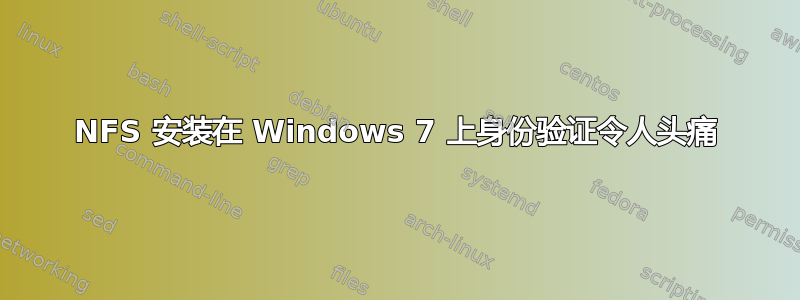
我在 Netapp 上有一个 NFS 共享,还有一台运行 Windows 7 Enterprise 的笔记本电脑需要安装该卷。我在 Windows 7 上安装了所有 NFS 服务,并且能够安装和浏览该驱动器。问题是我没有权限修改卷上的文件。
通过谷歌搜索,我认为这是因为我需要将我的 Windows 用户映射到 Unix 用户,但所有对用户名映射服务的搜索都表明这不是我在 Windows 7 笔记本电脑上可以做的事情。
有人知道我该怎么做才能让这台笔记本电脑访问该 NFS 共享吗?其他 Windows 笔记本电脑呢?
答案1
首先,您需要查看导出卷/qtree 的 Qtree 安全模式。该模式可以是 NTFS/Unix/Mixed。
如果仅供 Windows 主机使用,请将其设置为 NTFS;如果此特定导出要安装在 *nix 主机上,并且您希望 nix 处理所有权限,请将其设置为 Unix。通常应避免使用混合。
至于映射用户,这可以通过修改文件管理器上的 /etc/usermap.cfg 文件来完成。您可以通过多种方式编辑它,最简单(但最不安全)的方法是执行 NetApp 命令行中的“wrfile /etc/usermap.cfg”。首选方法是使用适当的编辑器通过 CIFS 或 NFS 安装内部“etc$”共享来编辑文件。
关于用户映射文件格式的文档可以在以下位置找到:NetApp NOW 网站这需要登录。
这里有一小段文档可能会让您有所启发:
#
# These are some sample "defensive" entries you may wish to use.
# They can be uncommented and placed as needed. See the System
# Administrator's Guide for a full description of this file.
#
# *\root => nobody # Map all NT users named "root" to have no
# # UNIX perms. They can still log in though.
#
# guest <= administrator # Map UNIX user "administrator" to NT guest.
# guest <= root # Map UNIX root user to guest. This should be
# # placed after any real "root" mappings.
#
# The next two mappings can be used to defeat the default mapping of
# the user names. That way only entries that are mapped previously in
# this file will be allowed.
#
# *\* => "" # Map all other NT requests to fail.
# "" <= * # Map all other UNIX requests to fail.
#
# The pound sign "#" is used as a comment character in map entries. The
# next three mappings show how to handle an NT user name which includes
# a pound sign. The name must be quoted. If the user account contains
# both domain and name, the username must be quoted separately.
#
# "#jdoe" => joed # Map NT user #jdoe to UNIX user joed.
# NTDOM\"#jdoe" <= joed # Map UNIX user joed to NT user NTDOM\#jdoe.
# "nt-domain\#jdoe" <= joed # BAD, won't work.
#
基本上,您将获取 Windows 用户的名称,然后使用类似以下方法将其映射到有效的 Unix 用户:
domain\user => unixUser
您还可以使用通配符。


